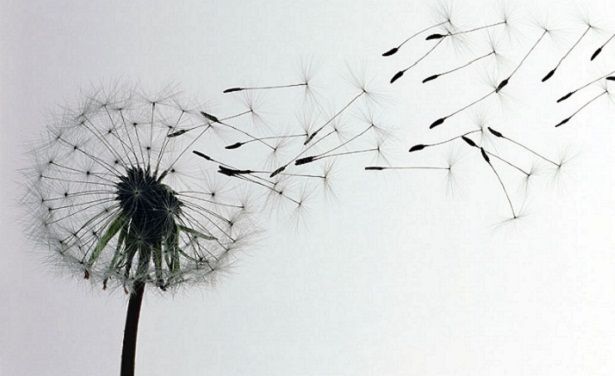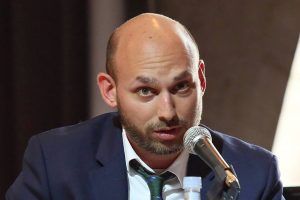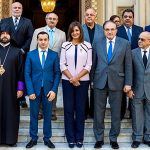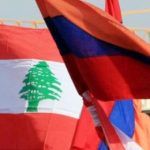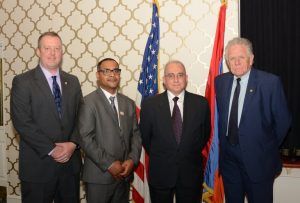Vahan Vermishyan: “The Homeland is the basis and pillar for all us Armenians”

The Ministry of Diaspora of the Republic of Armenia always opens its doors for Diaspora Armenians visiting the Homeland on any occasion, listens to them as they express their concerns and make proposals, learns about the news, activities and achievements of the Armenian community of the given country and does everything possible to help the communities solve all their problems. This time, the Ministry hosted Editor-in-Chief of the “Masyats Aghavni” Armenian-language (bilingual) social/political quarterly Vahan Vermishyan from Simferopol, who gave an interesting interview to Hayern Aysor.
Hayern Aysor: Welcome to the Homeland, Mr. Vermishyan! What have you done in Crimea? Please elaborate on that.
Vahan Vermishyan: I live and work in the city of Simferopol of the Republic of Crimea (Russian Federation). I have been a guest expert since 1993 when the Crimeans found it appropriate to call two experts from one family, and those two experts were Nelly Grigoryan and I. This laid the foundation for our cooperation. I was mainly invited to help reestablish the “Masyats Aghavni” journal that had been established by Gabriel Aivazovsky. In 1990, they had tried to reestablish it and had issued some copies. After that, they stopped publishing because apparently it was being released in Simferopol, but printed in Yerevan, and that required a tremendous amount of funding. The former editor-in-chief would take materials and come to Yerevan, and this was a lot of hard work. In 1993, I was invited to reestablish the journal with new methods and computer technologies. I received help from the editorial office of Azg Daily, which provided me with fonts and software, and I am very grateful for that. I also learned how to work with a computer. I organized the activities and managed to move forward. In 1994, I issued the first edition of the journal and, thank God, it has been publishing to this day. It is mainly a 44-page bilingual national, cultural and enlightening journal, but the major mission is to provide the Armenians of Crimea with news.
Hayern Aysor: Is there a section devoted to news from Armenia?
V. V.: There is no room for news from Armenia, and there is no sense in touching upon that. When the journal was being issued once every two weeks in the form of a newspaper, we would provide news from Armenia. We would receive news from Armenia, select the pieces of news that would interest the Armenians of Crimea and publish them in two languages. Now the media has developed so much that one can follow the news about Armenia on the Internet. Since 2003, the newspaper has been publishing as a journal. The State Committee for Nationalities transfers the money to the publishing house for printing and publishing expenses. My good classmate and deputy editor Rushan Pilosyan do the rest. For a while, there was no state funding at all, and we faced great difficulties with issuing the journal, but the community helped us issue editions and keep publishing. Due to circumstances, it so happened that I worked in the Armenian community of Odessa for three years, after which I was invited to Moscow where I started working for the CIS Fund. I was publishing a long magazine that was disseminated to all countries. In addition to culture, science and sports, it would also present a republic in alphabetical order. The order was violated when Armenia was presented first. Unfortunately, after I left, there was no more information about a particular republic. Now I have another offer. Starting from September 26, I will be the editor-in-chief of a new magazine called “Наш Крым” (Nash Krim-Our Crimea), which will be issued for all nationalities of Crimea. The main language will be Russian, but there will be materials in all languages so that the representatives of all nationalities understand.
Hayern Aysor: Is there a large Armenian community in Crimea, or are Armenians simply active and outstanding?
V. V.: The Armenian community of Crimea is not as large as everyone thinks it is. We built a settlement for Armenians and named it “Haykavan”. Armenians received over 400 land parcels, and most of them are under construction. The contractor for construction of Haykavan made a sharp statement when he said that the Armenians are small in number and simply move a lot. Yes, we are very mobile. We are active, and I would say extremely active. The census is wrong. Based on that census, there are only 11,037 Armenians, but in reality, there are 20-25,000 Armenians living in Crimea. Many Armenians of Crimea hadn’t even participated in the census, and that is why it is hard to state an exact figure. Of course, we have our list of active members of the community and those who are considered members of the Armenian Society of Crimea. Now it has been renamed as the Armenian National-Cultural Autonomy of the region of the Republic of Crimea. In addition, there are official organizations in seven cities. There are national and cultural autonomies in Simferopol, Saki, Yalta, Kerch, Yevpatoria and Janko that benefit from the resources provided to municipal organizations. Every year, we organize Armenian Culture Days and festivals that start in September. For about four or five years, we held the Holy Cross Armenian Cultural Festival and the Armenian Arts Festival, which went on to become national festivals (the new clergyman believed there couldn’t be such events in that territory since it was a monastic complex) called “Near Sea Armenia” (this is what the residents of Tchenova had called the southeastern coasts of Crimea around the 17th century). This year, the festival will be held on October 9th, and representatives, groups and individual performers of different nationalities are invited to attend. On that day, we also present national cuisine and culture. We have a Union of Writers headed by Rushan Pilosyan. The members of the Union present their works. We also have a Union of Armenian Artists, the members of which showcase their works. Former president of the Armenian community of Crimea Anushavan Danielyan realized that we needed to invite experts. They came, helped move things forward, and to this day, we have our own radio and television programs. We also have a choir and a dance ensemble. So, the Armenians are nationally and culturally active in Crimea.
Hayern Aysor: What is missing and what is an addition in the life of Vahan Vermishyan the philologist and editor whom I have known for so many years? I would like you to answer as a human being, as a professional and as an Armenian.
V. V.: Dear Karine, if you recall, I have always been an editor. I would prepare and edit materials for the “Zvartnots” newspaper of an Armenian university during my years of study, and the newspaper featured articles by people who went on to become notable writers. Every year, we publish an almanac, which also included the works of my late wife, Nelly Grigoryan. People would always tell me I could write poems. I have a couple of works, but I don’t consider myself a poet. I am an editor, write articles, translate and am a journalist. I have not changed. I am who I am. The only thing that has changed is my merit and experience.
Hayern Aysor: When did you establish friendly ties and cooperation with the Ministry of Diaspora of the Republic of Armenia?
V. V.: It is safe to say that I established friendly ties and cooperation with the Ministry since the very first days of its establishment. People would ask us for information and wanted to let everyone know about our experience since our community is a very developed community that organizes many substantial events.
Hayern Aysor: And as a friend to a friend, how would you assess the activities of the Ministry of Diaspora?
V. V.: I think the establishment of this Ministry was very important for Armenia because there are Armenians scattered across the globe. We mainly started working together through the large-scale Armenian language instruction programs. We achieved success by creating an Armenian language instruction program and textbook for 1st-4th grade Armenian schoolchildren abroad (the curriculum was developed by yours truly, Rushan Pilosyan and Tamara Salistaya-Grigoryan, who teaches at the non-conventional school after Gabriel Aivazovsky).
Hayern Aysor: What do you wish the Armenians on the occasion of the 25th anniversary of Independence of the Republic of Armenia?
V. V.: I wish the Armenians living in their homeland courage and wisdom, and to the families-welfare and prosperity. I want all of us to know who the real friends of our nation are.
Hayern Aysor: Mr. Vermishyan, I would also like to ask you to tell us what the Homeland means to you.
V. V.: The Homeland is the basis and pillar for all us Armenians. It is the land under our feet and our backbone.
Interview by Karine Avagyan




 Արևելահայերեն
Արևելահայերեն Արևմտահայերեն
Արևմտահայերեն Русский
Русский